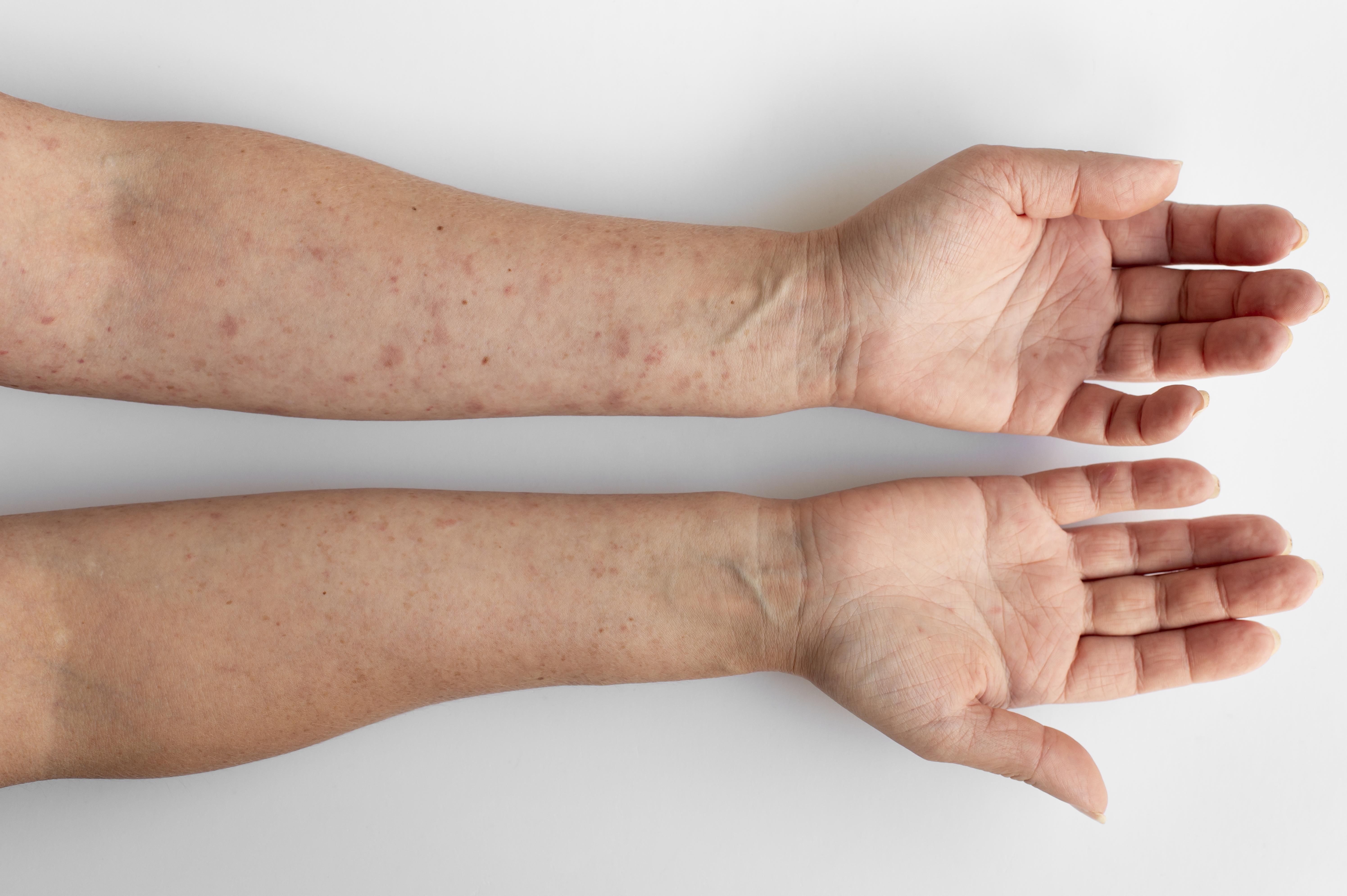Everything you need to know Urticaria & Angioedema

Urticaria, is common, and affects about 20% of people at some point in their lives. Urticaria consists of itchy pink or white raised round or ring-shaped areas of skin known as wheals. They also appear as lines when the skin is firmly stroked. Although the rash may persist for many weeks or months, individual lesions last only a few hours.
Angioedema is characterised by deeper swelling in the skin, which may take over 24 hours to clear. It is not usually itchy and can affect the lips and tongue. Some patients have one condition, others have both. The most common form of urticaria is called spontaneous urticaria where no cause is identified. Spontaneous urticaria is usually divided into acute and chronic forms. In acute urticaria, the episode lasts up to six weeks. Chronic urticaria, by definition, lasts for more than six weeks.
Causes
Urticaria is caused by the release of histamine from cells in the skin called mast cells. For babies, cow’s milk allergy is the commonest trigger. Bee and wasp stings can trigger urticaria, as can eating shellfish, nuts, Kiwi, strawberry and peaches.
If a medicine is suspected to be the cause of urticaria, your doctor will register this in your file and tell you to inform other healthcare staff to avoid giving you that medicine and all drugs related to its group. Almost any medicine can cause urticaria, but painkillers (especially aspirin and medicines like ibuprofen), antibiotics (especially penicillins), blood products and vaccinations are most likely to be responsible. Angioedema, in particular, can be caused by a type of drug (ACE inhibitors) used to treat high blood pressure.
Symptoms of urticaria and angioedema?
The main symptom of urticaria is itch; angioedema is not usually itchy but may be painful.
Rarely, the swelling of angioedema may affect the tongue or throat, causing difficulty with breathing or swallowing. This can be alarming but is rarely life-threatening.
A rare form of angioedema, and some urticaria syndromes can run in families.
Other urticarias
Physical urticarias - triggered by heat, cold, friction, pressure on the skin and even by water. It occurs within minutes, and last for less than one hour.
Dermographism (skin writing). Itchy wheals occur after friction such as rubbing or stroking the skin..
Cold urticaria. by exposure to cold, including rain, wind and cold water, causing itchy wheals in chilled areas. Swimming in cold water may cause severe whealing and fainting, and should be avoided. Patients should report their cold urticaria to medical personnel before operations.
Solar urticaria. occurs immediately after exposure to sunlight, and lasts for less than one hour after avoidance of exposure.
Delayed pressure urticaria. develops from pressure on the skin, for example from tight clothes. It can be painful and last longer than a day.
Aquagenic urticaria. small wheals occur at the site of contact with water.
Delayed pressure urticaria. develops from pressure on the skin, for example from tight clothes. It can be painful and last longer than a day.
Cholinergic urticaria - occurs under conditions that cause sweating, such as exercise, heat, emotional stress and eating spicy food. Within minutes, redness appears and lasts for less than an hour. Antihistamines are best taken before a triggering event (e.g. exercise).
Contact urticaria - Chemicals, foods, plants, animals, can cause wheals within minutes at the site of contact. e.g. eggs, nuts (e.g. peanuts), citrus fruits, rubber (latex) and contact with cats and dogs.
Urticarial vasculitis - A small percentage of people with an urticarial rash develop wheals that last longer than 24 hours. These may be tender and occasionally bruise. People may feel unwell and have joint and stomach pains. This is because their blood vessels become inflamed (a process known as vasculitis). Antihistamines are not very helpful but other medicines like cortisone can be used
Diagnosis
In chronic urticaria routine allergy tests are not necessary. In a small percentage of people, foods, food colouring agents and preservatives appear to worsen urticaria, and it might be helpful to identify these by keeping a food diary. These substances can be left out of the diet to see if the condition improves, and later reintroduced to confirm whether they are the cause of the urticaria. However, this is not always accurate and will not always show the cause.
Can urticaria be cured?
The treatments suppress the symptoms of the condition rather than cure it. In about half of the people affected by chronic ordinary Urticaria, the rash lasts for 6-12 months, and then gradually disappears. It can last longer and the course is unpredictable.
Treatment of urticaria?
Antihistamine tablets block the effect of histamine, and reduce itching and the rash, but may not relieve urticaria completely. There are many types including non-sedating and sedating antihistamines, as well as short acting and long acting types. The tablets can to be taken for as long as the urticaria persists. Even the non-sedating types can make some people sleepy.
Oral steroids can occasionally be given briefly for severe flares of acute and chronic urticaria, but are generally not necessary; the potential side effects usually outweigh the benefits in this condition. Treatments that act by suppressing the immune system (e.g. ciclosporin) may be beneficial for severe cases. Very rarely injections of adrenaline (epinephrine) may be required if there are breathing problems caused by angioedema.
A new biological injection called omalizumab is used for the most severe cases. This is only available in specialist clinics.
Self care
If possible, do not take the medicines codeine or aspirin, ibuprofen and naproxen (and other non-steroidal anti-inflammatory drugs).
Avoid anything that may worsen urticaria, such as heat, tight clothes, specific foods, coloring agents and preservatives .
Seek medical advice urgently if you are having problems with breathing or swallowing.
